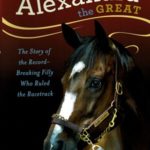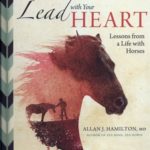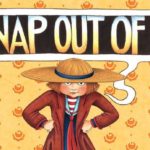Back in 1954, four young women from Middlebury College in Virginia decided to take a road trip? to explore the American West. In those days, young women just didn’t do that sort of thing.

?We made a plan and figured out how much it was going to cost,? says Blair Darnell (then Blair Bunting), the ringleader. ?We each put down 10 places we wanted to visit, and they correlated pretty well. We took a tour, camping out.?
They saw Jackson Hole, Wyoming, San Francisco and Gallup, New Mexico, and all points in between. They picked up a hitchhiker and dealt with bears going through camp.
And Blair was never the same. One year later, she transferred to the University of New Mexico in Albuquerque.
?I was in my little station wagon packed with my dog and all my earthly belongings, and I left (home) one morning,? she says. ?You know, you get to a stage in your life where you make a decision; I made a lifelong decision, and I left.
?The first day, I drove 700 miles just to make sure I didn’t turn back!? she says.
Blair has always tackled life with that kind of gumption. From her classical eastern upbringing to her marriage to legendary AQHA judgeand horseman Clarence ?Casey? Darnell, her life is one good tale.
Eastern Polish
When Blair Bunting pulled off the road to get her first good look at Albuquerque, she looked twice at the desert mesa landscape beyond the Rio Grande. It was a far cry from what she was used to east of the Mississippi.
She was born to a life of education and travel, from New Orleans to Europe. Her father, Fred Bunting, was a professor of economics at the University of North Carolina, Chapel Hill, and her mother, Ethel Jane, was the daughter of George and Martha Westfeldt of the Westfeldt Coffee Co. in New Orleans.
Blair?s childhood home was full of books and her parents? friends discussing politics over dinner. Vacations were often in New Orleans. She remembers watching Mardi Gras parades from Canal Street with her grandfather, ?Big George?; he was King of Carnival in 1947.
And there were always horses, from the ?chunky one? that bucked her off to the pony Daisy Mae who pulled Blair and her sister, Amy, in a straw basket cart. Horses were Blair?s passion, and she took care of them herself.
During World War II, her father was a Naval supply officer in England. Immediately after the war, the family moved to Vienna, Austria, as Europe rebuilt itself.
?I was sent to the French occupation school, and there were no English-speaking people there,? Blair says. ?I couldn?t create grades in French!?
But the school had an excellent Hungarian riding instructor, and Blair was allowed to rideno matter how poor her grades.
?We lived at the base of a huge set of mountains that we rode in,? she says. ?You went up, and you went down, and you?d think, ?My gosh, I’m going down that on this horse??
?I learned how to take charge of a horse, to not be scared,? she says. ?Not that I was, but I had never been challenged to go straight down a cliff or a jump-off. It was cavalry.?
Eventually, the family moved to Washington, D.C., where Blair?s father worked for the State Department. As the eldest Westfeldt grandchild, Blair continued to enjoy New Orleans society and was elected Queen of Proteus Mardi Gras Ball in 1954, the same year she toured the West with her friends.
An interest in anthropology and native cultures drew Blair to New Mexico, an interest she shared with her mother. Ethel Jane collected cultural artifacts throughout her life; her items from Pakistan are a standing exhibit at the Smithsonian Institution.
When Blair first drove into Albuquerque, many of the streets were still dirt roads. She enrolled in Latin American studies at UNM, graduated in 1956 and became a middle school teacher.
?That was about the time when I met a lot of people with horses,? she says with a smile.
The Horseman
Blair met trainer Casey Darnell at a local horse club.
?He had a palomino horsethat I really liked,? she says; it was AQHA Champion Skipity Scoot. ?I didn’t actually fall in love with (Casey) for a while. Eventually the ?inoculation? takes.?
Fifteen years her senior, Casey had grown up on his family?s ranch in New Mexico?s boot heel, a born horseman. His promising rodeo careerhad been interrupted by a stint as a B-26 bomber pilot in World War II. By the time he met Blair, he was well established in the Quarter Horse roping and reiningarena.
Casey took Blair dancing at a local club called The Hitchin? Post for their first date. They married in 1957 and started Alamo Farm in Albuquerque?s North Valley on the banks of the Rio Grande.
?I guess I hadn?t been motivated to stick with one thing for a long time, but I sure stayed there,? she says. ?Forty-five years.?
Western Family
In those days, there was no one else living on the Darnells? side of the river.
Casey started colts, trained, gave lessons and bred horses; he also traveled as a popular AQHA judge. He eventually trained Quarter Horse and Thoroughbred racehorsesat Santa Fe Downs and Turf Paradise.
Blair raised their family of four (Kristin, Cliff, Emily and Mary) and held the fort down when Casey was away. They were involved with the New Mexico State Fair, 4-H and New Mexico Quarter Horse youth, showing horses.
Alamo Farm had an uncanny way of collecting young people.
?Everybody used to come to our house,? says Blair?s daughter Emily Darnell-Nunez. ?Foreigners, Americans from all over, kids from Albuquerque; a lot of kids grew up riding at our house. It was never just us at the dinner or lunch table in the summer.?
The farm?s two bunkhouses always had occupants: Young people working for the farm, riding horses and mucking stalls. Cousins from Blair?s family back East, visiting for the summer. There were even a group of Canadian and French boys visiting town sent to stay with the Darnels because someone remembered that Blair spoke French.
The Darnell children?s friends, local 4-H ?corralitos? and New Mexico Quarter Horse youth? all came to ride. Casey and Blair were sticklers for good horsemanship.
?We?d all get up and complain that we had to water horses,? Emily says. ?And we were horseback all day. You learned early how to saddle your horse, and in the morning, we?d practice in the arena.?
The youngsters had the run of the ?bosque,? the wooded area alongside the river thick with brush and cottonwoods, riding up and down the irrigation ditches. Blair and Casey took groups on pack tripsinto the Pecos Wilderness, or out on the mesa.
?They knew they were going for a ride when they went out with Casey,? Blair says. ?It wasn?t going to be just get out for a little exercise and be back in time to have tea.?
And everyone at Alamo Farm was subject to the Darnells? expectations: Casey?s work ethicand Blair?s insistence on educationand doing something of value with yourself.
?Blair has been the staple in a lot of people?s lives who didn’t have an adult to count on,? Emily said. ?She was very clear about what you did with your life: You got your education, you had good morals and values, and you had fun.?
In the late 1980s, the four Darnell children threw a party for their parents at an Albuquerque hotel.
?It was in acknowledgement of all the people they?d helped through their lives,? explained Kristin Darnell Schmidt. ?We counted up about 300 names and sent invitations to everyone we could locate. Out of those, all but 10 or 15 came.
?There were a ton of people who had worked on the farm, ridden horses for my dad or teenagers from troubled families.?
Southwestern Lady
Blair?s influence extended off the horse farm as well, in the greater Albuquerque and horse community.
?Blair is not a self-serving woman,? says Mildred Janowitzof Franktown, Colorado, an American Quarter Horse Hall of Fame member and one of Blair?s closest friends. ?She loved the Quarter Horse.?
Blair was on the board of directors for NMQHA and ran shows. She is an AQHA Director emeritus, and the Darnells rarely missed an AQHA convention. She kept up with the local American Horse Council chapter and still mans a booth for it at the state fair each year.
?She always knew what was going on (in New Mexico),? says AQHA Professional Horseman Al Dunningof Scottsdale, Arizona. ?If I ever had any questions about a horse or travel there, I talked to Blair.
?You would always see her and her ponytail running around at the show, doing things. She always had a smile on her face and something good to say.?
Blair was also active in Albuquerque?s public school system and was involved with the UNM?s Maxwell Museum of Anthropology. Through the Rio Grande Preserve Association, she worked to protect the bosque as the city grew.
It seemed that the educated young woman from back East who has a passion for horses, truly found her place with her western horseman.
?There was something about (my parents?) relationship that brought out her capacity to be a grounded person,? Emily said. ?When she grew up, she moved around a lot. She changed her life when she married my dad, and I think it really resonated with the kind of person she was: a very generous, people person.?
When Casey died in 2001, life changed again. Alamo Farm scaled back its horse population. But Blair remains as active as ever with AQHA, local museums and the state fair, determined to read more of the books that fill her house and to travel.
How do you sum up a woman like Blair Bunting Darnell? According to son Cliff, ?You know, behind every strong man, there’s a stronger woman.?







